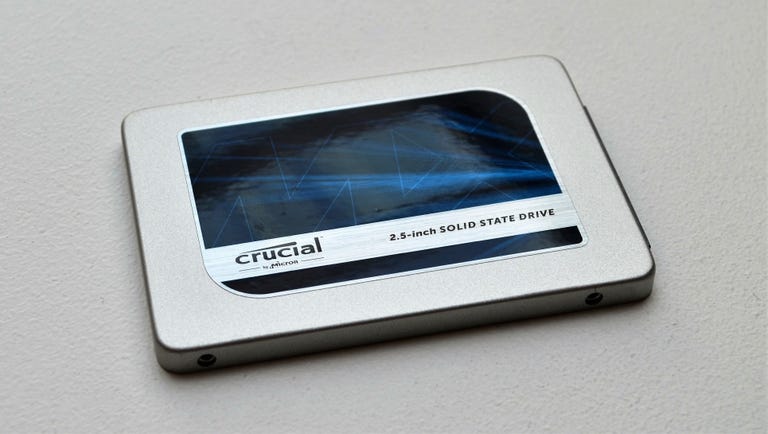 Why You Can Trust CNET
Why You Can Trust CNET Crucial MX300 SSD review: Affordable, efficient and fast
Looking for a solid-state drive to replace your hard drive? The new Crucial MX300 is totally worth your consideration.
If my review of the first solid-state drive with 3D flash memory, the well-balanced Samsung SSD 850 Evo, piqued your interest, you'll be happy to know there's a new player in town: the all-new MX300 drive from Crucial.
The Good
The Bad
The Bottom Line
The MX300 is the second solid-state drive to use 3D flash memory, as opposed to the traditional, planar 2D flash memory. If you think of each memory cell as a person, then 3D is to 2D flash memory as high rises are to single-family homes. You can house a lot more people with the former, on the same patch of land.
CNET Labs SSD copy tests
- As OS drive (read and write)
- As secondary drive (write only)
- As secondary drive (read only)
The Crucial drive is quite different from Samsung's, however. For one thing, the MX300 is available in fewer capacities -- 275GB, 525GB, 750GB, 1TB and 2TB -- whereas the 850 Evo can be had from 120GB all the way up to 4TB. (Originally, when first released, the MX300 was available in a single capacity of 750GB.)
Ironically, the Crucial drive is also missing a few crucial features, most notably the ability to customize overprovisioning (a predetermined amount of storage space that's put aside to better the drive's efficiency) and to boost speed by using a host computer's system memory as cache. Both perks are available on the Samsung. For this reason, in testing, the MX300, though faster than many budget SSDs and significantly faster than any hard drive, was clearly slower than the SSD 850 Evo.
PC Mark Storage test
- Storage Score
- Storage bandwith (MBps)
To make up for that fact, the MX300 is cheaper, with suggested prices of $70 or £63 for 275GB (around AU$95, converted), $130 or £117 for 525GB (AU$175), $190, £164 or AU$300 for 750GB, $260 or £164 for 1TB (AU$345) and $550 (£410, AU$717) for 2TB. That works out at about 25 cents per gigabyte. The Samsung SSD 850, which came out two and a half years ago, on average costs about 31 cents per gigabyte. It's likely that the MX300's price will get even lower in next couple of months. (Currently only the 750GB model seems to be available in Australia, the rest of the prices above are conversions.)
The MX300 supports the highest AES 256-bit hardware encryption, making it great for business users looking to keep their data private. It also has very high endurance rating. For example, crucial says you can write up to 220TB of data to the 750GB version of the drive (or 120GB every day for five years) before it would become unreliable. That's a lot of writing, since most of us don't write more than 10GB on a busy day. It comes with just a three-year warranty, however, which is shorter than the five years the Samsung SSD 850 Evo gets.
The Crucial MX300.
Should I get it?
The Crucial MX300 is a great deal those needing a plenty fast SSD without wanting to spend too much. To make it easier for consumers, Crucial has a web-based tool that quickly determines which SSD will be compatible with your system.
On the other hand, however, if you want a smaller capacity you can save some money by going with the Crucial MX200. Or if you want even faster speed, better feature set and the top-notch capacity of 4TB, the Samsung SSD 850 Evo is an excellent alternative, albeit at higher cost.
In all, the MX300 is easy for me to recommend to anybody who wants to upgrade a computer still running on a regular hard drive.
Update, September 6, 2016: First published on June 16 2016, this review was updated when Crucial released more capacities of the SSD, including the 2TB version.


